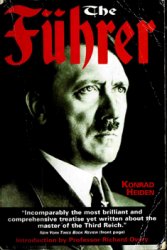(1935)
On May 27, 1935, “Black Monday” to the administration of President Franklin D. Roosevelt, the Supreme Court in the Schechter case struck down the National Industrial Recovery Act (NIRA), one of the cornerstone agencies of the First New Deal. Subsequent Court decisions would overturn other major New Deal programs, but perhaps no decision was so important as Schechter in the escalating conflict between the judicial and executive branches that led to the court-packing plan of 1937.
The Schechter Poultry Corporation was a Brooklyn, New York, company that specialized in kosher chickens. In 1934, the company had been convicted of selling diseased chickens, of not killing its chickens in the required fashion, and of not complying with wage and hour requirements— all violations of the Live Poultry Code of the National Recovery Administration (NRA). A number of lawsuits against the NRA worked their way through the judicial system, and as part of its effort to end unwanted government regulation, the Iron and Steel Institute financed the Schechter company’s appeal to the Supreme Court. By a unanimous 9-0 decision, the Court found the NIRA unconstitutional on two grounds. First, the Constitution authorized the federal government to regulate commerce only between states—but the Schechter company operated only within the state of New York. Second, the NRA codes (which regulated such matters as production, prices, and wages) were an unconstitutional delegation of legislative authority to the executive—“delegation running riot,” as one justice put it.
The Schechter (or “Sick Chicken”) decision caused consternation in the Roosevelt administration. It indicated the Court’s readiness to use the commerce clause and the distinction between interstate and intrastate commerce to invalidate other New Deal measures. It threatened the administration’s efforts to extend the authority of the executive branch and the role of independent rule-making agencies. And although by May 1935 the NRA was unpopular and ineffective, it was a major New Deal program that embodied an approach to recovery to which Roosevelt was still committed. In fundamental ways, then, the decision seemed to challenge the New Deal itself.
Angry at the decision and distressed by its unanimity, Roosevelt at a press conference four days later called it the most important ruling since the Dred Scott case. He wondered whether the Court thought the federal government had control over any national economic problem and declared that the ruling put the nation back to “the horse-and-buggy definition of interstate commerce.” Beyond this initial response, the Schechter decision was crucial to the dynamics producing the Second New Deal of 1935 as well as Roosevelt’s court-packing plan of 1937.
See also presidency.




 World History
World History









